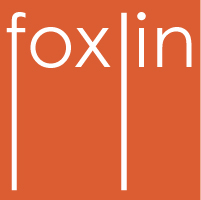Urban Metabolic Growth is a research attempt at applying the principles that define the growth of organisms to the gradual (or not so gradual) growth of cities and metropolises. Two case studies were adopted: 1. a region in northern China that hosts an arid and cold climate and 2. a region in western Australia that hosts a hot and semi-arid climate. The ideas are amazing, more images and explanation…
According to Pavlos and Mohammed “Modern day planners attempt to predict the cities’ eventual size, population and rate of growth; which are almost impossible to predefine. There is also a lack of consciousness in considering the availability of natural resources into their design. On the other hand many of the ancient cities have developed through time, based on multiple principles such as functionality and resources.”
Cities need to understand the resources available and then adjust the growth of the city to those parameters to prevent the disturbing reality of many cities today that have grown beyond control and have very real issues concerning availability of food and drinkable water within a realistic distance. The first urban response to these problems in the modern day is increasing density, but as history has revealed “a dense city has the major advantage of being very energy efficient, however if uncontrolled, could become too dense and many parts of the city might end up isolated.”
As mentioned above, the dissertation involves two proposed models, located in two areas with extreme but different climatic conditions, genetic algorithms and rules were defined to establish how buildings would spread and grow across the ground plane:
“The design of the city derives from the collaboration of two systems working in parallel; the network system and the occupied built spaces. The former is initially driven by mathematical definitions of fractals and L-systems [both naturally occurring], which are next combined with more parameters, such as the topographical features of the area and the desirable functional input. The latter derives from experimental methods which simulate processes of Genetic Algorithms: populations of urban blocks are created and next, the fittest-to-the-criteria ones are chosen. Through a series of Urban-related rules the aggregates of the chosen blocks start to form the urban fabric. For these processes many parametric tools are utilized, such as Grasshopper and Rhino-Script, in order to control the criteria as well as to extract accurate evaluation results from each simulation.”
The sectional diagram below shows the potential of this system, buildings can become integrated into the landscape rather than working against them. This kind of integration if administered across the entire city can result in harmonious relationship between nature and the built environment.
This is where it gets very interesting. The algorithms applied envision to create a system that takes advantage of the current fabric of the environment when applying new structure, therefore the system doesn’t simply lay blocks upon the ground field but considers the already existent complexities of a three dimensional field. This way buildings work in harmony with the system that already exists, increasing efficiency and using natural infrastructure already there:
“Moreover, the design proposal envisages the integration between network systems and the built environment of the city being one system, aiming at the design of urban aggregates that develop in a three-dimensional field, unlike the conventional ways of city planning. The overlapping between paths, open spaces and buildings will not only provide small areas that can be self-sustained, but also exploit many natural resources, such as vegetation or water resources coexisting in different levels in height within the urban fabric, so that the environmental performance can be enhanced. The proposed models follow the principles of Polycentricity to ensure that all parts within the city have easy and proximitable access to the central hubs, as well as to break down the city into individual self-sustained patches in terms of their size, population density, functions, energy and water consumption.”
All in all, the eventual goal is to lay the groundwork for envisioning cities that behave similarly to living organisms. Therefore, the Growth Model for both cities is described as followed: “the first sample of urban fabric is created and, next, growth is stimulated by the interaction of local behaviors at certain areas of the existing urban fabric and hence the global pattern is steadily formed. In essence, the urban pattern is the result of an emergent system.
More articles on work of the MSMS team: Root System Analysis, Emergent Technologies Book








